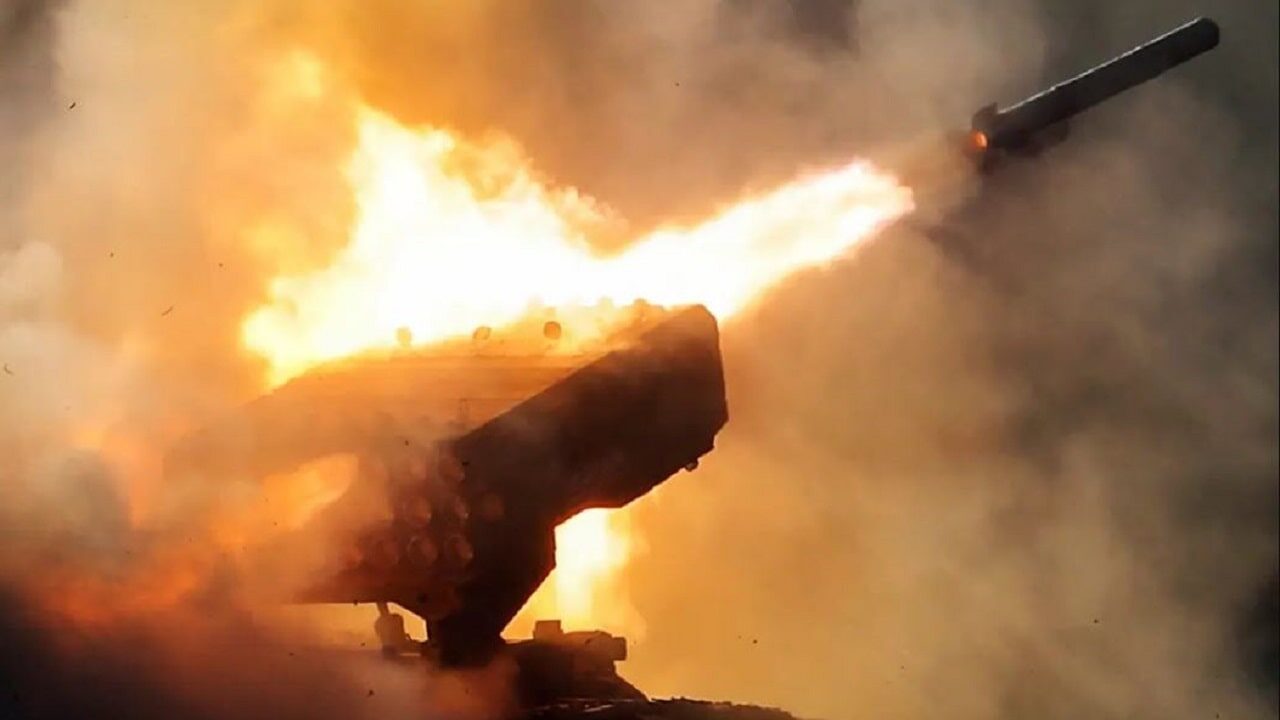Footage recorded (see below) by a Russian Orlan-10 UAV appears to show TOS-1A thermobaric missiles striking Ukrainian territory from a multiple launch rocket system or MLRS. The missiles were reportedly fired at a Ukrainian base, but no location was specified in the Telegram posts that first shared the video.
One Telegram account shared the footage and some context in Russian.
“Defeat of the positions of the Armed Forces of Ukraine by strikes of multiple launch rocket systems of the Armed Forces of the Russian Federation, video of objective control means,” the caption reads, per Google Translate.
In the 10-second clip, roughly one dozen rockets can be seen striking Ukrainian residential properties. The buildings may have since become a base for Ukrainian soldiers fighting in the eastern Donbas region, but it’s also possible that the homes were still in use by their owners.
Some English-speaking Twitter users speculated that the homes may have been empty, while others questioned the legality of the thermobaric bombs used in the video.
What is the TOS-1A Missile System?
The TOS-1A is a Soviet-era Russian multiple rocket launcher capable of firing thermobaric warheads. The rocket launcher system is typically mounted to a T-72 tank.
The surface-to-surface missile was first designed in the 1980s to attack fortified positions and destroy light armored vehicles.
Russia’s TOS-1A Solntsepyok is made up of three components. The first is the BM-1 combat vehicle, a modified T-71A tank chassis that is fitted with a rotating rocket launcher on the top of the tank. It has room for 24 unguided thermobaric rockets, which can be fired in up to 12 seconds.
In the video footage shared online on Monday, around one dozen rockets are seen striking the residential buildings in less than 10 seconds.
The TOS1-A is supported by TZM-5 re-supply vehicles. Each of the re-supply vehicles can carry up to 24 rockets and as much as 400 liters of fuel.
Finally, the TOS-1A uses two kinds of rockets – the MO.1.01.04 and the MO.1.01.04M. The first rocket measures 10ft 10” in length and the second slightly more, at 12ft 2”.
Missiles can be fired at a distance of up to 12km, though Russia publishes few official details or specifications of the Soviet-era vehicle.
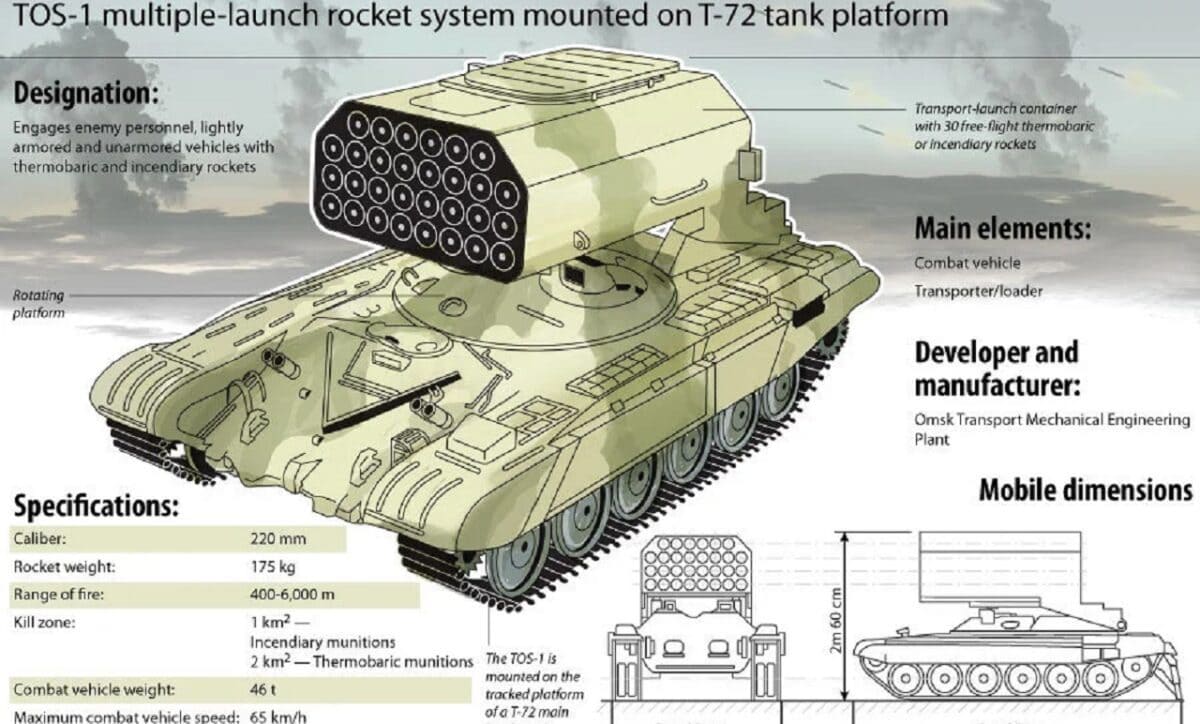
Russia MLRS TOS-1. Image Credit: Creative Commons.
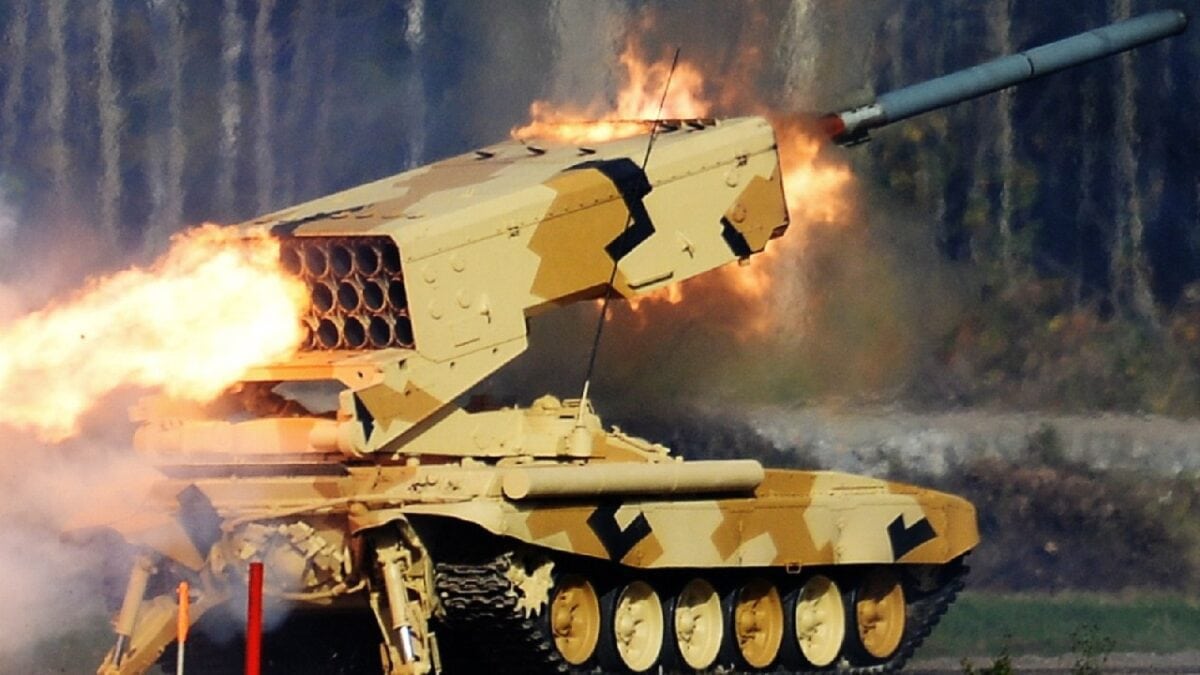
Russian TOS-1 firing. Image Credit: Creative Commons.
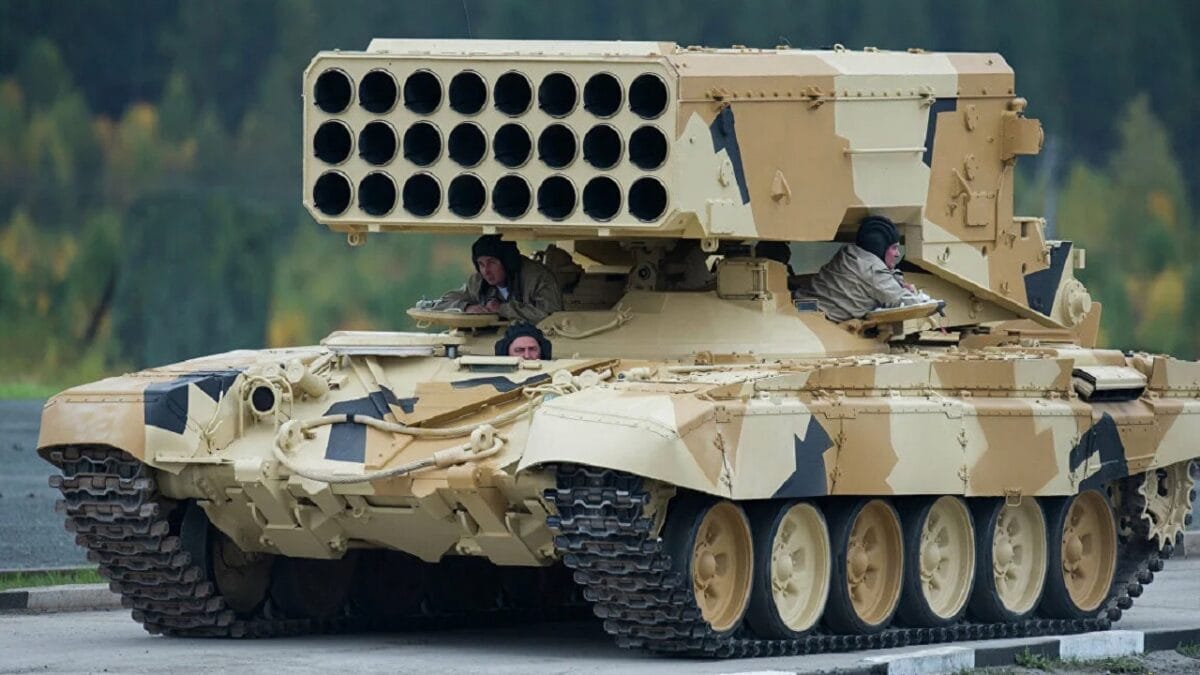
Russian TOS-1 MLRS. Image Credit: Creative Commons.
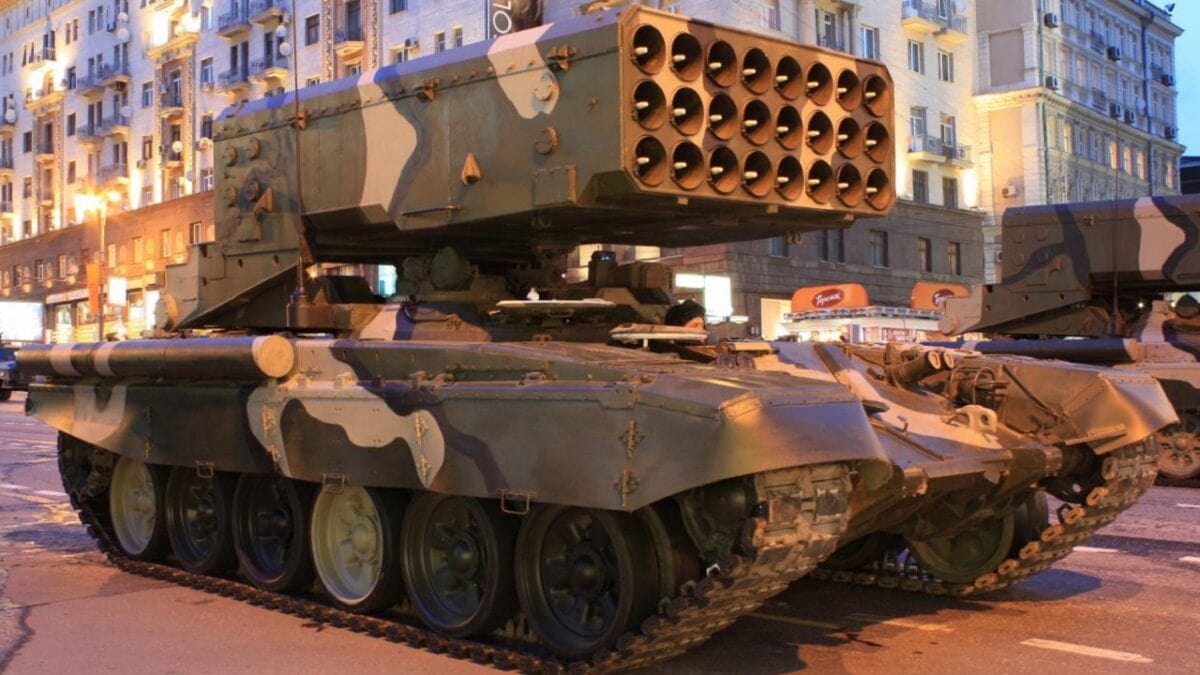
Russian TOS-1 MLRS. Image Credit: Creative Commons.
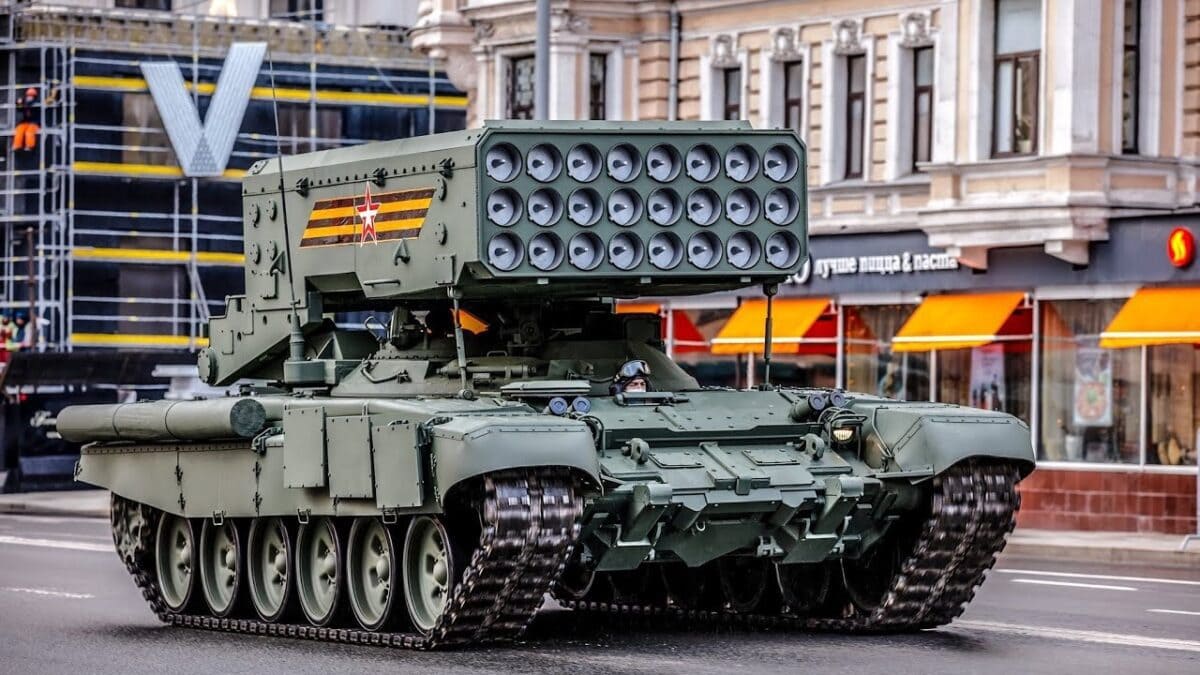
Russian TOS-1. Image Credit: Creative Commons.
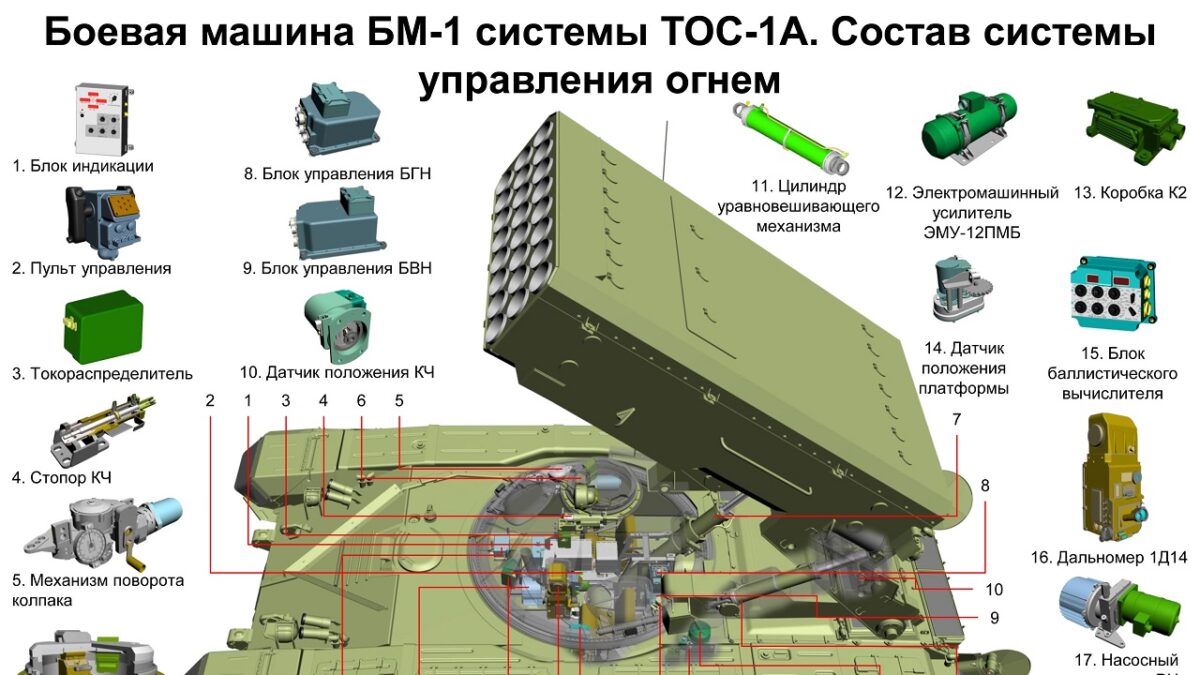
Russia’s TOS-1 Thermobaric MLRS.
Britain’s Ministry of Defence confirmed in March that the TOS-1A weapons system was being used in Ukraine.
What Are Thermobaric Missiles?
The thermobaric missiles used by the TOS-1A missile system, which are also known as vacuum bombs, are made up of a fuel chamber and two separate explosive charges.
When the missiles reach their target, the first charge blows open the missile and releases the fuel into the air. Once the fuel forms a cloud, the second charge detonates the cloud of fuel.
What results is a large fireball and blast that create a vacuum around the explosion. The vacuum then pulls in more oxygen, making the fireball even bigger and hotter.
Jack Buckby is a British author, counter-extremism researcher, and journalist based in New York. Reporting on the U.K., Europe, and the U.S., he works to analyze and understand left-wing and right-wing radicalization, and reports on Western governments’ approaches to the pressing issues of today. His books and research papers explore these themes and propose pragmatic solutions to our increasingly polarized society.

